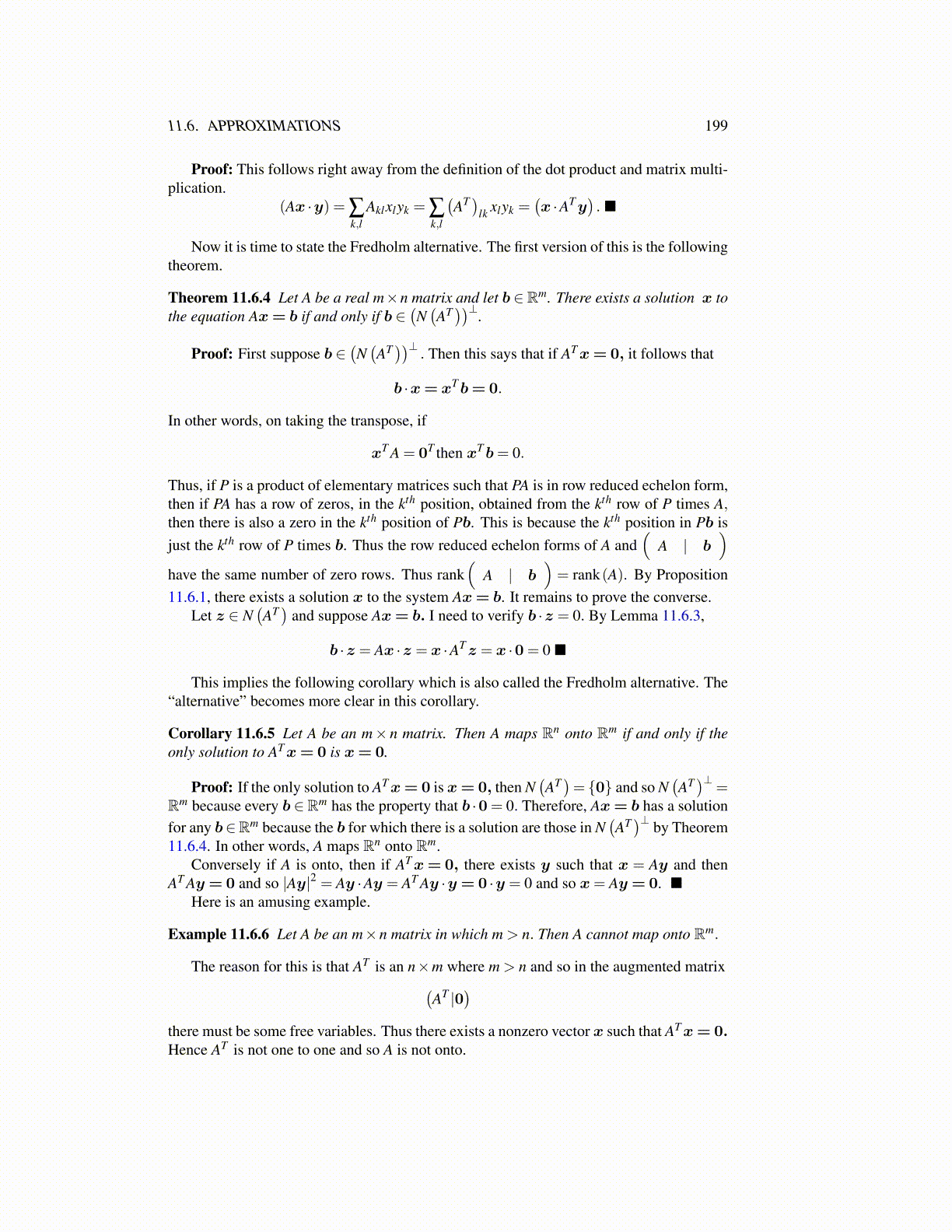
11.6. APPROXIMATIONS 199
Proof: This follows right away from the definition of the dot product and matrix multi-plication.
(Ax ·y) = ∑k,l
Aklxlyk = ∑k,l
(AT )
lk xlyk =(x ·ATy
). ■
Now it is time to state the Fredholm alternative. The first version of this is the followingtheorem.
Theorem 11.6.4 Let A be a real m×n matrix and let b ∈Rm. There exists a solution x tothe equation Ax= b if and only if b ∈
(N(AT))⊥.
Proof: First suppose b ∈(N(AT))⊥
. Then this says that if ATx= 0, it follows that
b ·x= xTb= 0.
In other words, on taking the transpose, if
xT A = 0T then xTb= 0.
Thus, if P is a product of elementary matrices such that PA is in row reduced echelon form,then if PA has a row of zeros, in the kth position, obtained from the kth row of P times A,then there is also a zero in the kth position of Pb. This is because the kth position in Pb isjust the kth row of P times b. Thus the row reduced echelon forms of A and
(A | b
)have the same number of zero rows. Thus rank
(A | b
)= rank(A). By Proposition
11.6.1, there exists a solution x to the system Ax= b. It remains to prove the converse.Let z ∈ N
(AT)
and suppose Ax= b. I need to verify b ·z = 0. By Lemma 11.6.3,
b ·z = Ax ·z = x ·ATz = x ·0= 0 ■
This implies the following corollary which is also called the Fredholm alternative. The“alternative” becomes more clear in this corollary.
Corollary 11.6.5 Let A be an m× n matrix. Then A maps Rn onto Rm if and only if theonly solution to ATx= 0 is x= 0.
Proof: If the only solution to ATx= 0 is x= 0, then N(AT)= {0} and so N
(AT)⊥
=Rm because every b ∈Rm has the property that b ·0= 0. Therefore, Ax= b has a solutionfor any b∈Rm because the b for which there is a solution are those in N
(AT)⊥ by Theorem
11.6.4. In other words, A maps Rn onto Rm.Conversely if A is onto, then if ATx= 0, there exists y such that x = Ay and then
AT Ay = 0 and so |Ay|2 = Ay ·Ay = AT Ay ·y = 0 ·y = 0 and so x= Ay = 0. ■Here is an amusing example.
Example 11.6.6 Let A be an m×n matrix in which m > n. Then A cannot map onto Rm.
The reason for this is that AT is an n×m where m > n and so in the augmented matrix(AT |0
)there must be some free variables. Thus there exists a nonzero vector x such that ATx= 0.Hence AT is not one to one and so A is not onto.